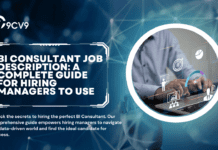Key Takeaways
- Cloud security software protects cloud environments by preventing cyber threats, securing data, and ensuring regulatory compliance.
- Key features include encryption, identity and access management (IAM), threat detection, and real-time monitoring for enhanced security.
- It works by implementing AI-driven threat intelligence, automated security policies, and continuous monitoring to safeguard cloud assets.
As businesses and individuals increasingly rely on cloud computing for data storage, software applications, and business operations, ensuring robust security measures in cloud environments has become a top priority.
The convenience and scalability of cloud computing have transformed the way organizations manage their digital infrastructure. However, as cloud adoption grows, so do cybersecurity threats, including data breaches, cyberattacks, and unauthorized access.
This has created an urgent need for comprehensive security solutions that protect sensitive data, prevent cyber threats, and ensure compliance with regulatory standards.

Cloud security software has emerged as a crucial tool in safeguarding cloud environments by offering advanced security features such as data encryption, identity and access management (IAM), real-time threat detection, and automated incident response.
Unlike traditional cybersecurity solutions that focus on on-premises protection, cloud security software is specifically designed to secure cloud-based resources, ensuring seamless protection across multiple cloud platforms, including public, private, and hybrid clouds.
With the rising number of cyber threats targeting cloud infrastructures, businesses must implement proactive security strategies to mitigate risks and prevent potential data leaks.
Misconfigurations, unauthorized access, and insider threats continue to be significant challenges for organizations that store vast amounts of critical data in the cloud.
Cloud security software addresses these concerns by providing end-to-end encryption, robust authentication mechanisms, and continuous monitoring to detect and neutralize threats before they cause damage.
Another essential aspect of cloud security software is its ability to assist businesses in achieving compliance with global data protection regulations such as the General Data Protection Regulation (GDPR), the Health Insurance Portability and Accountability Act (HIPAA), and other industry-specific security standards.
Compliance violations can lead to severe legal and financial consequences, making it imperative for organizations to deploy cloud security solutions that provide automated compliance management and audit reporting.
Furthermore, cloud security software leverages artificial intelligence (AI) and machine learning (ML) to enhance threat detection and response capabilities.
AI-driven security analytics allow organizations to identify suspicious activities, detect anomalies in user behavior, and respond to security incidents in real time. This proactive approach significantly reduces the risk of cyberattacks while improving overall cloud security posture.
In this blog, we will explore the fundamentals of cloud security software, its key features, how it works, and the benefits it offers to businesses and individuals.
Additionally, we will examine the common challenges associated with cloud security and discuss best practices for implementing a robust cloud security strategy.
By understanding how cloud security software functions and its critical role in modern cybersecurity, organizations can make informed decisions to strengthen their cloud security defenses and protect their digital assets from evolving cyber threats.
Before we venture further into this article, we would like to share who we are and what we do.
About 9cv9
9cv9 is a business tech startup based in Singapore and Asia, with a strong presence all over the world.
With over nine years of startup and business experience, and being highly involved in connecting with thousands of companies and startups, the 9cv9 team has listed some important learning points in this overview of What is Cloud Security Software and How It Works.
If your company needs recruitment and headhunting services to hire top-quality employees, you can use 9cv9 headhunting and recruitment services to hire top talents and candidates. Find out more here, or send over an email to [email protected].
Or just post 1 free job posting here at 9cv9 Hiring Portal in under 10 minutes.
What is Cloud Security Software and How It Works
- Understanding Cloud Security Software
- Key Features of Cloud Security Software
- How Cloud Security Software Works
- Benefits of Using Cloud Security Software
- Common Challenges in Cloud Security
- Best Practices for Implementing Cloud Security Software
1. Understanding Cloud Security Software
As cloud computing becomes an integral part of modern businesses, securing cloud-based assets is more critical than ever. Cloud security software plays a vital role in protecting data, applications, and infrastructure from cyber threats, unauthorized access, and compliance violations. This section explores what cloud security software is, why it is essential, and how it differs from traditional cybersecurity solutions.
What is Cloud Security Software?
Cloud security software is a specialized cybersecurity solution designed to protect cloud environments from security threats, data breaches, and unauthorized access. Unlike traditional on-premises security tools, cloud security solutions are optimized for dynamic cloud infrastructures, including public, private, and hybrid cloud environments.
- Designed for Cloud Infrastructure
- Provides security for cloud-based applications, storage, and virtual machines.
- Works across multiple cloud providers, including AWS, Microsoft Azure, and Google Cloud.
- Protects Against Cyber Threats
- Shields sensitive data from cyberattacks, including malware, ransomware, and insider threats.
- Uses advanced threat detection mechanisms to identify suspicious activities.
- Ensures Regulatory Compliance
- Helps businesses comply with industry-specific regulations such as GDPR, HIPAA, and PCI-DSS.
- Automates compliance management and generates audit reports.
- Uses AI and Machine Learning for Enhanced Security
- AI-driven threat intelligence improves real-time security analysis.
- Machine learning algorithms detect unusual behavior and prevent attacks.
Why Cloud Security Software is Essential
With organizations shifting from traditional IT infrastructures to cloud-based solutions, security challenges have evolved. Cloud security software is necessary to address the unique vulnerabilities associated with cloud environments.
1. Growing Threat Landscape
- Rise in Cloud-Based Cyberattacks
- Hackers increasingly target cloud storage, applications, and virtual environments.
- Example: The 2021 Accellion data breach compromised cloud file-sharing services, affecting multiple organizations.
- Insider Threats and Human Errors
- Employees or contractors with access to cloud systems may unintentionally or maliciously leak sensitive data.
- Misconfigured cloud storage can expose confidential information to the public.
- Phishing and Credential Theft
- Attackers exploit weak or stolen credentials to gain unauthorized access to cloud accounts.
- Example: A misconfigured Amazon Web Services (AWS) S3 bucket led to the exposure of millions of user records from various companies.
2. Protection Against Data Loss and Breaches
- Data Encryption
- Encrypts data at rest and in transit to prevent unauthorized access.
- Uses AES-256 encryption standards to secure cloud databases.
- Access Controls and Multi-Factor Authentication (MFA)
- Limits user access based on roles and responsibilities.
- Example: Google Workspace enforces MFA to prevent unauthorized logins.
- Backup and Disaster Recovery
- Ensures data integrity by providing automated cloud backups.
- Reduces downtime in case of a ransomware attack or accidental deletion.
3. Compliance with Security Regulations
- Meeting Global Data Protection Laws
- Businesses must comply with GDPR, CCPA, HIPAA, and other regulations to avoid penalties.
- Example: Healthcare organizations using Microsoft Azure must adhere to HIPAA compliance for patient data protection.
- Automated Compliance Management
- Cloud security software helps organizations continuously monitor compliance status.
- Provides detailed audit logs and reports for regulatory authorities.
4. Securing Multi-Cloud and Hybrid Cloud Environments
- Managing Security Across Multiple Cloud Providers
- Businesses using AWS, Google Cloud, and Azure simultaneously require centralized security management.
- Example: Cloud security platforms like Palo Alto Prisma Cloud provide unified security controls.
- Hybrid Cloud Security Challenges
- Organizations operating both on-premises and cloud-based resources face integration challenges.
- Cloud security software ensures consistent policies across hybrid environments.
How Cloud Security Software Differs from Traditional Cybersecurity
Traditional cybersecurity solutions focus on securing on-premises infrastructure, while cloud security software is tailored for the dynamic nature of cloud environments.
1. Security Model
- Traditional Security
- Focuses on perimeter defense using firewalls and antivirus software.
- Example: On-premises networks use intrusion detection systems (IDS) to monitor traffic.
- Cloud Security
- Implements a shared responsibility model where cloud providers and customers work together to ensure security.
- Example: AWS provides security for infrastructure, but customers must secure their applications and data.
2. Scalability and Flexibility
- Traditional Security
- Requires manual configuration and deployment of security solutions.
- Difficult to scale as businesses expand.
- Cloud Security
- Adapts to growing workloads with automated security configurations.
- Example: Cloudflare provides scalable web security solutions for cloud-based applications.
3. Threat Detection and Response
- Traditional Security
- Relies on rule-based threat detection with limited real-time capabilities.
- Cloud Security
- Uses AI and behavioral analytics for proactive threat detection.
- Example: Microsoft Defender for Cloud analyzes cloud activities to detect anomalies.
Conclusion
Understanding cloud security software is crucial for organizations looking to protect their digital assets in the cloud. As cyber threats become more sophisticated, cloud security solutions provide advanced protection mechanisms such as encryption, identity management, and real-time threat monitoring. By leveraging AI-driven security analytics and compliance automation, businesses can secure their cloud environments and reduce the risk of data breaches.
In the next section, we will explore the key features of cloud security software and how they contribute to a robust cybersecurity framework.
2. Key Features of Cloud Security Software
Cloud security software incorporates a wide range of security mechanisms designed to protect cloud environments from cyber threats, data breaches, and unauthorized access. These solutions provide businesses with advanced security capabilities, including threat detection, identity management, encryption, and compliance monitoring. Below is an in-depth exploration of the key features of cloud security software and how they enhance cloud protection.
1. Identity and Access Management (IAM)
IAM ensures that only authorized users can access cloud resources, minimizing the risk of unauthorized data exposure.
- User Authentication and Authorization
- Implements multi-factor authentication (MFA) to verify user identities.
- Example: Google Workspace enforces MFA to prevent unauthorized access.
- Role-Based Access Control (RBAC)
- Assigns user permissions based on their role in the organization.
- Example: AWS Identity and Access Management (IAM) allows organizations to define fine-grained access policies.
- Single Sign-On (SSO)
- Enables users to log in once and access multiple cloud applications securely.
- Example: Okta provides SSO solutions for enterprise cloud applications.
- Privileged Access Management (PAM)
- Restricts access to sensitive data to only privileged users.
- Helps prevent insider threats and credential misuse.
2. Data Encryption and Protection
Encryption ensures that sensitive data stored in the cloud remains secure, even if accessed by unauthorized parties.
- Encryption at Rest and In Transit
- Uses AES-256 encryption to secure stored and transmitted data.
- Example: Google Cloud encrypts data at rest and in transit by default.
- End-to-End Encryption (E2EE)
- Protects data from being intercepted during transmission.
- Example: Messaging apps like WhatsApp use E2EE for secure communication.
- Key Management Systems (KMS)
- Automates encryption key generation and management.
- Example: AWS Key Management Service (KMS) provides centralized key management for cloud applications.
- Tokenization and Data Masking
- Replaces sensitive data with unique tokens to prevent exposure.
- Example: Payment processors use tokenization to protect credit card information.
3. Threat Detection and Prevention
Cloud security software continuously monitors cloud environments to detect and prevent cyber threats in real time.
- AI and Machine Learning-Powered Threat Detection
- Uses behavioral analytics to identify suspicious activities.
- Example: Microsoft Defender for Cloud detects anomalies in user behavior.
- Intrusion Detection and Prevention Systems (IDPS)
- Monitors network traffic for potential security threats.
- Example: Snort provides open-source intrusion detection for cloud environments.
- Zero Trust Security Model
- Assumes that no user or device should be trusted by default.
- Requires continuous verification for access to cloud resources.
- Advanced Malware and Ransomware Protection
- Uses AI-based antivirus solutions to detect and block malware.
- Example: CrowdStrike Falcon provides AI-driven malware protection.
4. Compliance and Regulatory Management
Cloud security software helps businesses meet industry-specific security standards and regulations.
- Automated Compliance Monitoring
- Continuously audits security controls to ensure compliance.
- Example: AWS Config tracks compliance with security policies.
- Regulatory Compliance Support
- Ensures adherence to GDPR, HIPAA, PCI-DSS, and other data protection laws.
- Example: Healthcare organizations using Google Cloud must comply with HIPAA regulations.
- Security Posture Management
- Provides risk assessments to improve cloud security strategies.
- Example: Prisma Cloud by Palo Alto Networks assesses security posture across cloud environments.
- Audit Logs and Reporting
- Generates detailed reports for regulatory audits and investigations.
- Example: IBM Cloud Security Advisor provides security insights and audit reports.
5. Cloud Workload Protection
Cloud security software protects workloads running in cloud environments, including virtual machines, containers, and serverless applications.
- Container Security
- Scans container images for vulnerabilities before deployment.
- Example: Aqua Security secures Kubernetes container environments.
- Serverless Security
- Protects cloud functions from unauthorized execution and API attacks.
- Example: AWS Lambda security solutions provide monitoring for serverless applications.
- Cloud Firewall and Network Security
- Blocks unauthorized network traffic to prevent cyberattacks.
- Example: Cloudflare provides cloud-based firewall protection for businesses.
6. Disaster Recovery and Business Continuity
Cloud security solutions ensure that businesses can quickly recover from security incidents and system failures.
- Automated Backup and Recovery
- Periodically backs up critical cloud data to prevent loss.
- Example: Veeam Cloud Backup provides automated recovery solutions.
- Disaster Recovery as a Service (DRaaS)
- Enables businesses to restore cloud services in case of failure.
- Example: Zerto offers real-time replication for disaster recovery.
- High Availability and Redundancy
- Ensures uninterrupted cloud services through load balancing.
- Example: Microsoft Azure Availability Zones distribute workloads across multiple locations.
7. Secure API Management
Application Programming Interfaces (APIs) are crucial for cloud services but can become attack vectors if not secured.
- API Access Control
- Restricts API access based on authentication and authorization policies.
- Example: Google Cloud API Gateway manages secure API access.
- API Encryption and Secure Communication
- Encrypts API traffic to prevent data interception.
- Example: TLS encryption secures API communications.
- Rate Limiting and Threat Mitigation
- Prevents API abuse by restricting excessive requests.
- Example: Cloudflare API Shield detects and blocks suspicious API activities.
8. Cloud Security Posture Management (CSPM)
CSPM tools provide organizations with visibility into their cloud security configurations and help identify risks.
- Misconfiguration Detection
- Identifies security misconfigurations in cloud environments.
- Example: Check Point CloudGuard automates misconfiguration detection.
- Real-Time Risk Analysis
- Continuously monitors cloud security risks.
- Example: AWS Security Hub centralizes risk management for AWS services.
- Automated Remediation
- Fixes security issues without manual intervention.
- Example: Prisma Cloud provides automated security policy enforcement.
Conclusion
The key features of cloud security software provide organizations with comprehensive protection against cyber threats, data breaches, and compliance violations. By integrating identity and access management, encryption, threat detection, and compliance management, businesses can ensure the security of their cloud environments. Cloud security software also enhances workload protection, disaster recovery, API security, and overall cloud security posture.
3. How Cloud Security Software Works
Cloud security software operates through a combination of security frameworks, automated monitoring tools, encryption techniques, and access control mechanisms to safeguard cloud environments from cyber threats. It ensures that cloud-based applications, data, and infrastructure remain protected from unauthorized access, data breaches, and malicious activities. Below is an in-depth explanation of how cloud security software works, broken down into key processes and mechanisms.
1. Identity and Access Management (IAM) in Cloud Security
IAM is the first line of defense in cloud security, ensuring that only authorized users and devices can access cloud resources.
- User Authentication and Verification
- Uses multi-factor authentication (MFA) to verify user identities.
- Example: Google Cloud IAM enforces MFA for accessing sensitive data.
- Role-Based Access Control (RBAC) and Least Privilege Access
- Assigns permissions based on user roles, preventing excessive access rights.
- Example: AWS Identity and Access Management (IAM) restricts access to cloud resources based on predefined policies.
- Single Sign-On (SSO) for Secure Authentication
- Allows users to log in once and securely access multiple cloud applications.
- Example: Okta provides SSO for enterprises using multiple cloud platforms.
- Privileged Access Management (PAM)
- Restricts high-level access to only authorized administrators.
- Example: CyberArk PAM helps secure privileged accounts from insider threats.
2. Data Encryption and Protection Mechanisms
Encryption ensures that cloud-stored and transmitted data remains confidential, preventing unauthorized access.
- Encryption at Rest and In Transit
- Protects stored data and data in transit using strong encryption algorithms like AES-256.
- Example: Microsoft Azure encrypts all data at rest and in transit by default.
- End-to-End Encryption (E2EE) for Data Security
- Encrypts data from the source to the recipient, ensuring it remains unreadable by intermediaries.
- Example: WhatsApp’s cloud backups use E2EE for user privacy.
- Cloud-Based Key Management Systems (KMS)
- Automates encryption key management for cloud security.
- Example: AWS Key Management Service (KMS) securely manages encryption keys.
- Data Tokenization and Masking
- Replaces sensitive data with non-sensitive tokens to prevent exposure.
- Example: Payment processors use tokenization to protect customer card details.
3. Threat Detection and Intrusion Prevention Systems (IPS/IDS)
Cloud security software continuously monitors and detects cyber threats to prevent data breaches.
- AI and Machine Learning-Based Threat Detection
- Uses behavioral analysis to identify suspicious activities in real-time.
- Example: Microsoft Defender for Cloud detects abnormal user behavior in cloud applications.
- Intrusion Detection and Prevention Systems (IDPS)
- Monitors network traffic to detect and prevent security breaches.
- Example: Snort provides intrusion detection for cloud-based infrastructures.
- Zero Trust Security Model Implementation
- Assumes no implicit trust, requiring continuous verification for access.
- Example: Google BeyondCorp applies Zero Trust security for cloud access.
- Malware and Ransomware Prevention
- Scans cloud environments for malware and blocks suspicious activity.
- Example: CrowdStrike Falcon uses AI-driven security to detect ransomware.
4. Secure API and Application Security Measures
Cloud applications and APIs are common attack vectors, making security software essential in protecting them.
- API Security and Access Control
- Implements authentication and authorization policies for API access.
- Example: Google Cloud API Gateway restricts API access with OAuth and API keys.
- Web Application Firewalls (WAFs) for Cloud Security
- Blocks malicious web traffic to prevent cyberattacks.
- Example: AWS WAF protects cloud-based applications from SQL injection and cross-site scripting attacks.
- Runtime Application Self-Protection (RASP)
- Monitors and blocks suspicious activities at the application layer.
- Example: Signal Sciences RASP protects cloud applications from real-time attacks.
5. Compliance and Regulatory Security Monitoring
Cloud security software ensures compliance with regulatory standards to prevent legal issues and data breaches.
- Automated Compliance Auditing and Reporting
- Continuously monitors security configurations to maintain compliance.
- Example: AWS Config automates compliance tracking across cloud environments.
- Industry-Specific Security Compliance Management
- Adheres to regulations such as GDPR, HIPAA, PCI-DSS, and ISO 27001.
- Example: Google Cloud provides built-in compliance tools for GDPR adherence.
- Security Posture Management and Risk Assessment
- Identifies vulnerabilities and provides recommendations for risk mitigation.
- Example: Prisma Cloud assesses cloud security posture to reduce compliance risks.
6. Disaster Recovery and Business Continuity in Cloud Security
Cloud security software includes recovery mechanisms to ensure data availability and business continuity.
- Automated Cloud Backup Solutions
- Creates periodic backups to prevent data loss.
- Example: Veeam Cloud Backup offers automatic recovery solutions for cloud environments.
- Disaster Recovery as a Service (DRaaS)
- Provides cloud-based disaster recovery to restore services during failures.
- Example: Zerto offers real-time data replication for disaster recovery.
- High Availability and Fault Tolerance Mechanisms
- Ensures system uptime with redundant data centers and load balancing.
- Example: Microsoft Azure Availability Zones distribute workloads across multiple regions.
7. Cloud Security Posture Management (CSPM) and Security Automation
CSPM tools help organizations monitor, analyze, and manage their cloud security posture.
- Misconfiguration Detection and Security Policy Enforcement
- Identifies misconfigurations that could lead to security breaches.
- Example: Check Point CloudGuard automatically remediates misconfigurations.
- Automated Threat Response and Incident Management
- Uses AI-driven automation to respond to security incidents in real time.
- Example: IBM QRadar provides automated threat intelligence for cloud environments.
- Continuous Security Monitoring and Analytics
- Monitors security logs and analyzes attack patterns.
- Example: Splunk Enterprise Security offers real-time analytics for cloud threats.
Conclusion
Cloud security software works by integrating identity management, encryption, threat detection, compliance monitoring, disaster recovery, and security automation to protect cloud environments. It ensures that organizations maintain strong security postures while adhering to industry regulations. By leveraging AI-powered analytics, real-time monitoring, and automated remediation, businesses can effectively mitigate cloud security threats.
In the next section, we will explore the benefits of using cloud security software and how it enhances enterprise cloud security strategies.
4. Benefits of Using Cloud Security Software
Cloud security software is essential for businesses and organizations that rely on cloud computing for their operations. It provides multiple layers of security to safeguard data, applications, and infrastructure from cyber threats. Below are the key benefits of using cloud security software, categorized into different areas of security, compliance, and operational efficiency.
1. Enhanced Data Protection and Privacy
Cloud security software helps protect sensitive data from unauthorized access, breaches, and loss.
- Encryption for Data Security
- Ensures that all data stored in and transmitted through the cloud is encrypted using advanced encryption algorithms like AES-256.
- Example: Microsoft Azure encrypts all data at rest and in transit to prevent data leaks.
- Data Loss Prevention (DLP) Mechanisms
- Monitors, detects, and prevents unauthorized data transfers to external sources.
- Example: Google Workspace DLP prevents employees from sharing confidential company data.
- Tokenization and Anonymization of Data
- Replaces sensitive data with unique tokens, making it unusable if intercepted.
- Example: Stripe uses tokenization to protect credit card transactions in cloud-based payment systems.
- Secure Cloud Backups and Disaster Recovery
- Ensures data availability through automated backups and disaster recovery solutions.
- Example: AWS Backup provides centralized cloud-based backup management for critical enterprise data.
2. Protection Against Cyber Threats and Attacks
Cloud security software includes proactive measures to detect, mitigate, and prevent cyber threats.
- Advanced Threat Detection with AI and Machine Learning
- Identifies suspicious activities and anomalies in real time.
- Example: CrowdStrike Falcon AI-powered detection identifies zero-day threats.
- Intrusion Detection and Prevention Systems (IDPS)
- Monitors network traffic to detect and block potential attacks.
- Example: Snort provides real-time intrusion prevention for cloud-based networks.
- Web Application Firewall (WAF) Protection
- Filters and blocks malicious web traffic, including SQL injections and cross-site scripting (XSS).
- Example: AWS WAF protects cloud applications from known exploits and vulnerabilities.
- Zero Trust Security Model Implementation
- Requires continuous verification of all users and devices attempting to access cloud resources.
- Example: Google’s BeyondCorp framework enforces Zero Trust security principles.
3. Regulatory Compliance and Governance
Cloud security software helps organizations meet legal and industry-specific compliance requirements.
- Automated Compliance Monitoring and Reporting
- Continuously tracks security policies and generates compliance reports.
- Example: AWS Config helps businesses meet GDPR, HIPAA, and PCI DSS standards.
- Data Residency and Sovereignty Compliance
- Ensures that data is stored in specific geographical locations as required by local regulations.
- Example: Microsoft Azure allows organizations to select data storage regions to comply with local data laws.
- Audit Logging and User Activity Tracking
- Records all cloud activities for forensic analysis and security audits.
- Example: Google Cloud Audit Logs track changes in cloud environments for compliance verification.
- Role-Based Access Control (RBAC) for Policy Enforcement
- Ensures that users can only access resources based on their roles.
- Example: AWS Identity and Access Management (IAM) enforces strict user access policies.
4. Cost Savings and Operational Efficiency
Cloud security software helps reduce costs and improve operational efficiency for businesses.
- Elimination of On-Premise Security Costs
- Reduces the need for physical security hardware and maintenance expenses.
- Example: Cloud-based security eliminates the need for traditional firewalls and on-site security teams.
- Automated Security Patching and Updates
- Ensures that cloud infrastructure is always up-to-date with the latest security patches.
- Example: Microsoft Defender for Cloud automates vulnerability management for cloud applications.
- Reduction in Downtime and Business Disruptions
- Prevents security breaches that could lead to costly downtime.
- Example: A cloud security breach at Capital One in 2019 resulted in a $190 million settlement—demonstrating the high cost of weak cloud security.
- Scalability and Flexible Resource Management
- Enables businesses to scale security resources based on demand without increasing costs.
- Example: AWS Auto Scaling allows security resources to adjust dynamically based on traffic and workload changes.
5. Improved Access Control and Identity Management
Cloud security software enhances identity and access management (IAM) to prevent unauthorized logins.
- Multi-Factor Authentication (MFA) for Enhanced Security
- Requires multiple verification steps before granting access.
- Example: Okta provides MFA-based access control for cloud applications.
- Single Sign-On (SSO) for Seamless Authentication
- Allows users to access multiple cloud applications with a single login.
- Example: Google SSO enables seamless access to Google Drive, Gmail, and other services.
- Privileged Access Management (PAM) to Protect Admin Accounts
- Restricts high-level access to critical cloud systems.
- Example: CyberArk protects privileged accounts from insider threats and cyberattacks.
- Real-Time Access Monitoring and Anomaly Detection
- Tracks user activity and detects unusual login attempts.
- Example: Microsoft Sentinel uses AI to analyze cloud login patterns and detect anomalies.
6. Business Continuity and Disaster Recovery
Cloud security software ensures uninterrupted business operations, even in the event of cyberattacks or system failures.
- Automated Cloud Backup Solutions
- Regularly backs up critical data and systems for quick recovery.
- Example: Veeam Backup and Replication provides automated backup solutions for cloud storage.
- Disaster Recovery as a Service (DRaaS)
- Offers cloud-based disaster recovery solutions to minimize downtime.
- Example: Zerto enables real-time replication for disaster recovery across cloud platforms.
- Redundant Data Centers for High Availability
- Ensures that applications remain online even if a data center fails.
- Example: Microsoft Azure Availability Zones distribute workloads across multiple locations to prevent outages.
- Incident Response Automation for Faster Recovery
- Uses AI-driven workflows to mitigate security incidents instantly.
- Example: IBM Resilient SOAR automates security response to minimize downtime.
7. Scalability and Future-Proof Security
Cloud security software is designed to adapt to evolving threats and business growth.
- Adaptive Security with AI and Machine Learning
- Continuously learns and evolves to detect new threats.
- Example: Darktrace AI adapts to new cyber threats in real-time.
- Seamless Integration with Cloud Platforms
- Works across multi-cloud and hybrid cloud environments.
- Example: Palo Alto Networks Prisma Cloud secures AWS, Azure, and Google Cloud platforms.
- Cloud Security Posture Management (CSPM) for Continuous Optimization
- Identifies misconfigurations and suggests improvements to security policies.
- Example: Check Point CloudGuard continuously scans cloud environments for vulnerabilities.
- Automated Security Compliance Updates
- Ensures that security policies remain compliant with evolving regulations.
- Example: Google Security Command Center automatically updates compliance settings for cloud users.
Conclusion
Cloud security software provides businesses with enhanced protection, compliance, cost savings, and operational efficiency. It ensures that data remains safe, access is controlled, and cyber threats are proactively mitigated. From securing cloud workloads to preventing data breaches and enabling seamless disaster recovery, cloud security software is an essential investment for organizations of all sizes.
5. Common Challenges in Cloud Security
As cloud adoption continues to rise, so do the security challenges associated with it. Businesses leveraging cloud computing must address various risks related to data protection, regulatory compliance, identity management, and cyber threats. Below are some of the most common challenges in cloud security, along with relevant examples of real-world threats and solutions.
1. Data Breaches and Unauthorized Access
One of the biggest concerns in cloud security is the risk of data breaches, where sensitive information is exposed or accessed by unauthorized parties.
- Lack of Proper Access Controls
- Weak access policies or excessive user permissions can lead to unauthorized access.
- Example: In 2021, Facebook suffered a massive data leak affecting over 530 million users due to misconfigured access settings.
- Misconfigured Security Settings
- Incorrect settings in cloud storage can leave data publicly accessible.
- Example: Capital One’s data breach in 2019 occurred due to a misconfigured AWS S3 bucket, exposing sensitive customer data.
- Weak Passwords and Credential Theft
- Stolen or weak credentials can allow attackers to bypass security controls.
- Example: The Colonial Pipeline ransomware attack in 2021 resulted from a compromised VPN password, leading to a major fuel supply disruption in the U.S.
- Shadow IT Risks
- Employees using unauthorized cloud services can create security vulnerabilities.
- Solution: Companies should implement Cloud Access Security Brokers (CASB) to monitor unauthorized cloud usage.
2. Compliance and Regulatory Challenges
Organizations operating in the cloud must adhere to various compliance standards and regulations, which can be complex and costly to maintain.
- Meeting Industry-Specific Compliance Requirements
- Different industries must follow strict data security laws (e.g., HIPAA for healthcare, PCI DSS for financial services).
- Example: A healthcare provider failing to comply with HIPAA cloud security rules could face heavy fines and reputational damage.
- Data Residency and Sovereignty Issues
- Some countries require that sensitive data be stored within their jurisdiction.
- Example: The European Union’s General Data Protection Regulation (GDPR) mandates that companies handling EU citizens’ data comply with strict privacy rules.
- Continuous Monitoring and Compliance Audits
- Regular security audits are necessary to ensure ongoing compliance.
- Solution: Tools like AWS Config and Microsoft Defender for Cloud help automate compliance monitoring.
- Third-Party Vendor Risks
- Cloud providers may not always meet an organization’s security requirements.
- Solution: Businesses should conduct vendor risk assessments before choosing a cloud service provider.
3. Insecure APIs and Third-Party Integrations
Many cloud-based applications rely on APIs (Application Programming Interfaces), which can introduce security vulnerabilities.
- Unsecured API Endpoints
- Publicly accessible APIs can be exploited by attackers to access sensitive data.
- Example: The LinkedIn data breach in 2021 exposed 700 million user records due to improperly secured APIs.
- Lack of API Authentication and Encryption
- Weak authentication mechanisms can lead to unauthorized API usage.
- Solution: Implement OAuth, JWT, and API gateways to secure API communication.
- Third-Party Plugin and Software Vulnerabilities
- Integrating third-party applications without proper security checks can introduce risks.
- Solution: Use security assessment tools like Snyk to scan third-party software for vulnerabilities.
4. Insider Threats and Human Errors
Employees, contractors, or partners with access to cloud systems can intentionally or unintentionally cause security breaches.
- Malicious Insider Attacks
- Employees with privileged access can steal or misuse sensitive data.
- Example: In 2018, a Tesla employee intentionally leaked confidential business data, causing financial and reputational damage.
- Accidental Data Deletion or Misconfiguration
- Human mistakes, such as deleting critical files or misconfiguring security settings, can compromise security.
- Solution: Implement automated backups and role-based access controls (RBAC).
- Phishing Attacks Targeting Employees
- Cybercriminals trick employees into revealing login credentials.
- Example: Google and Facebook lost $100 million in a phishing scam where attackers posed as a legitimate vendor.
- Lack of Security Awareness Training
- Employees may unknowingly expose the organization to risks.
- Solution: Conduct regular security awareness training to educate staff on best practices.
5. Advanced Cyber Threats and Attacks
Cloud environments are frequent targets for sophisticated cyberattacks, including ransomware, DDoS attacks, and malware infections.
- Ransomware Attacks on Cloud Storage
- Attackers encrypt cloud data and demand ransom payments.
- Example: In 2020, the Garmin ransomware attack shut down the company’s cloud services for days.
- Distributed Denial of Service (DDoS) Attacks
- Attackers flood cloud servers with traffic, causing service disruptions.
- Example: In 2020, AWS suffered a record-breaking 2.3 Tbps DDoS attack, highlighting the growing scale of cloud-based attacks.
- Malware and Zero-Day Exploits
- Hackers exploit unknown software vulnerabilities to gain unauthorized access.
- Solution: Use Endpoint Detection and Response (EDR) tools like CrowdStrike Falcon to detect malware threats.
- Botnet Attacks on Cloud Infrastructure
- Compromised cloud servers are used to launch large-scale cyberattacks.
- Solution: Implement cloud-based firewalls and AI-driven threat detection.
6. Cloud Misconfigurations and Visibility Issues
Misconfigurations and lack of visibility into cloud environments can expose organizations to security risks.
- Improperly Configured Storage Buckets
- Unsecured cloud storage can expose sensitive information.
- Example: In 2017, Verizon exposed 14 million customer records due to an incorrectly configured Amazon S3 bucket.
- Insufficient Logging and Monitoring
- Without proper monitoring, security breaches may go undetected for months.
- Solution: Use Security Information and Event Management (SIEM) tools like Splunk for real-time threat monitoring.
- Lack of Centralized Cloud Security Management
- Managing multi-cloud environments can be challenging without a unified security strategy.
- Solution: Implement Cloud Security Posture Management (CSPM) tools like Prisma Cloud for centralized security control.
7. Lack of Cloud Security Expertise
Many organizations struggle to find qualified professionals with expertise in cloud security.
- Shortage of Skilled Cloud Security Professionals
- Businesses face challenges in hiring cybersecurity experts with cloud knowledge.
- Example: A report from ISC² highlights a global shortage of 3.4 million cybersecurity professionals.
- Complexity of Multi-Cloud Security Management
- Organizations using multiple cloud providers must manage different security controls and policies.
- Solution: Use security orchestration tools to streamline security management across AWS, Azure, and Google Cloud.
- Slow Adoption of Security Automation
- Many companies still rely on manual security processes, increasing the risk of human error.
- Solution: Implement Security Orchestration, Automation, and Response (SOAR) platforms to automate threat detection and response.
Conclusion
Cloud security challenges continue to evolve, requiring businesses to adopt robust security strategies and tools to protect their digital assets. From data breaches and compliance issues to insider threats and advanced cyberattacks, organizations must proactively address these risks. Implementing strong access controls, securing APIs, using threat intelligence, and investing in cloud security expertise can help mitigate these risks effectively.
6. Best Practices for Implementing Cloud Security Software
Implementing cloud security software effectively is critical for protecting sensitive data, maintaining compliance, and preventing cyber threats. Organizations must adopt a comprehensive security strategy that incorporates access controls, encryption, threat monitoring, and best-in-class security solutions. Below are the best practices for implementing cloud security software to ensure robust protection against cyber risks.
1. Strengthen Identity and Access Management (IAM)
Ensuring that only authorized users can access cloud resources is fundamental to cloud security. Implementing strong IAM policies reduces the risk of unauthorized access and data breaches.
- Implement Role-Based Access Control (RBAC)
- Assign permissions based on user roles to prevent excessive privileges.
- Example: A financial services company using RBAC can ensure that only accountants have access to financial records while IT staff manage infrastructure security.
- Use Multi-Factor Authentication (MFA)
- Require users to verify their identity using an additional authentication factor, such as a mobile OTP or biometric verification.
- Solution: Enable MFA for all admin and user accounts to mitigate credential theft risks.
- Apply the Principle of Least Privilege (PoLP)
- Grant users only the access necessary for their job functions to minimize security risks.
- Example: A developer should not have administrative access to the cloud infrastructure unless required.
- Monitor and Audit User Activity
- Implement identity monitoring tools to detect suspicious login attempts.
- Solution: Use AWS CloudTrail, Azure Active Directory, or Google Cloud IAM logging to track user access and activity.
2. Implement Strong Data Encryption
Encryption is crucial for protecting data at rest, in transit, and in use within cloud environments.
- Encrypt Data at Rest and in Transit
- Use advanced encryption algorithms (AES-256, TLS 1.2+) to secure data storage and transmission.
- Example: A healthcare company encrypting patient records ensures compliance with HIPAA data protection regulations.
- Manage Encryption Keys Securely
- Use Key Management Services (KMS) to store and manage encryption keys securely.
- Solution: AWS KMS and Azure Key Vault provide secure encryption key management.
- Enable End-to-End Encryption (E2EE)
- Encrypt data from the source to the destination, ensuring only authorized recipients can decrypt it.
- Example: Cloud-based email security solutions like ProtonMail use E2EE to protect sensitive messages.
3. Secure Cloud Workloads and Infrastructure
Protecting cloud infrastructure from cyber threats requires strong security policies, configuration management, and regular updates.
- Implement Network Security Controls
- Use Virtual Private Clouds (VPCs), firewalls, and intrusion detection systems (IDS/IPS) to protect cloud workloads.
- Solution: Cloud-native security solutions like AWS Security Groups or Azure Firewall help prevent unauthorized access.
- Regularly Update and Patch Cloud Software
- Keep cloud applications, virtual machines, and operating systems updated to prevent vulnerabilities.
- Example: The 2017 Equifax data breach occurred due to an unpatched Apache Struts vulnerability.
- Enable Cloud Security Posture Management (CSPM)
- Use automated tools to detect and remediate misconfigurations in cloud environments.
- Solution: Prisma Cloud and Microsoft Defender for Cloud help enforce security compliance.
4. Implement Advanced Threat Detection and Response
Proactively identifying and mitigating security threats is essential for cloud security.
- Deploy Security Information and Event Management (SIEM) Solutions
- SIEM tools aggregate and analyze security logs to detect cyber threats.
- Solution: IBM QRadar and Splunk Enterprise Security help organizations detect anomalies in real time.
- Use Endpoint Detection and Response (EDR) Tools
- Monitor cloud endpoints for malicious activity and unauthorized access.
- Example: CrowdStrike Falcon detects and stops ransomware attacks on cloud workloads.
- Enable Continuous Security Monitoring
- Use cloud-native monitoring tools to track suspicious activity.
- Solution: AWS GuardDuty and Azure Security Center provide automated threat intelligence.
5. Protect Cloud APIs and Third-Party Integrations
APIs are a common attack vector in cloud environments, making their security a top priority.
- Enforce API Authentication and Authorization
- Require API tokens, OAuth, or JWT authentication to restrict access.
- Solution: Google Apigee API Gateway provides secure authentication and monitoring.
- Implement API Rate Limiting and Throttling
- Restrict the number of API requests to prevent Distributed Denial of Service (DDoS) attacks.
- Example: Twitter API limits request rates to prevent abuse by malicious bots.
- Conduct Regular API Security Assessments
- Scan APIs for vulnerabilities and implement security patches.
- Solution: OWASP API Security Top 10 guidelines help mitigate common API risks.
6. Ensure Compliance with Regulatory Standards
Organizations must adhere to industry regulations to avoid legal and financial penalties.
- Conduct Regular Compliance Audits
- Ensure cloud security aligns with GDPR, HIPAA, PCI DSS, or SOC 2 requirements.
- Example: Financial institutions must follow PCI DSS standards for securing credit card transactions.
- Use Cloud Compliance Management Tools
- Automate compliance tracking with cloud-native solutions.
- Solution: AWS Artifact and Azure Compliance Manager assist with regulatory compliance.
- Maintain Data Residency and Privacy Controls
- Store sensitive data in regions that comply with data protection laws.
- Example: A company operating in the EU must store customer data in GDPR-compliant data centers.
7. Strengthen Disaster Recovery and Backup Strategies
Having a robust disaster recovery plan ensures business continuity in case of cyberattacks or system failures.
- Regularly Back Up Cloud Data
- Store backups in secure, geographically redundant locations.
- Example: Google Cloud Backup & DR helps businesses recover from ransomware attacks.
- Test Disaster Recovery Plans Periodically
- Conduct simulations to evaluate recovery time and data integrity.
- Solution: Use AWS Disaster Recovery or Azure Site Recovery to automate failover processes.
- Implement Immutable Backups
- Prevent ransomware from encrypting backup data.
- Example: Object Lock in Amazon S3 ensures backups cannot be modified after storage.
8. Educate Employees on Cloud Security Best Practices
Employees are often the weakest link in cloud security, making security awareness training essential.
- Conduct Security Awareness Programs
- Train employees on phishing, password security, and cloud data handling.
- Example: Google’s phishing-resistant authentication training reduces cyberattack risks.
- Implement a Zero-Trust Security Model
- Assume all users, devices, and applications are untrusted by default.
- Solution: Google’s BeyondCorp framework enforces a zero-trust approach to cloud security.
- Enforce Strong Password Policies
- Require employees to use complex passwords and password managers.
- Solution: Password managers like LastPass and 1Password reduce the risk of weak credentials.
Conclusion
Implementing cloud security software effectively requires a multi-layered approach that includes strong identity management, encryption, threat detection, and compliance measures. By following these best practices, organizations can reduce security risks, protect sensitive data, and ensure business continuity in cloud environments.
Conclusion
Cloud security software plays a crucial role in safeguarding digital assets, ensuring data privacy, and maintaining business continuity in an era where cloud computing is the backbone of modern enterprises. As organizations increasingly shift their operations to cloud environments, the need for robust security solutions has never been greater. From protecting sensitive data against cyber threats to ensuring compliance with industry regulations, cloud security software serves as an essential defense mechanism for businesses of all sizes.
The Growing Importance of Cloud Security
With the rapid adoption of cloud technologies, businesses are becoming more vulnerable to evolving cyber threats such as ransomware attacks, data breaches, and unauthorized access. Traditional security measures that were effective for on-premises environments are no longer sufficient for securing cloud-based infrastructures. Cloud security software bridges this gap by offering advanced protection mechanisms, including encryption, identity and access management (IAM), threat detection, and compliance enforcement.
- Rising Cybersecurity Threats: The frequency and sophistication of cyberattacks continue to grow, targeting cloud environments due to their vast repositories of sensitive data. Without strong cloud security measures, businesses risk severe financial losses, reputational damage, and legal consequences.
- Increased Regulatory Requirements: Governments and industry bodies worldwide have introduced stringent data protection regulations such as GDPR, HIPAA, and PCI DSS. Cloud security software helps businesses meet these compliance requirements by implementing strict security policies and continuous monitoring.
- The Shift to Remote Work: The global shift towards remote work has accelerated cloud adoption, making security even more critical. Employees accessing cloud-based applications from various locations increase the risk of data exposure. Cloud security software ensures secure access through multi-factor authentication (MFA), VPNs, and zero-trust security models.
How Cloud Security Software Enhances Business Security
Cloud security solutions go beyond traditional firewalls and antivirus software, providing comprehensive protection for modern digital infrastructures. Key benefits include:
- Real-Time Threat Detection and Response: Advanced cloud security solutions leverage artificial intelligence (AI) and machine learning (ML) to detect anomalies, identify potential cyber threats, and respond in real-time before damage occurs.
- Automated Security Management: Businesses can implement security policies automatically across their cloud environments, reducing the risk of misconfigurations and human errors that can lead to breaches.
- Data Encryption and Secure Storage: Cloud security software encrypts data both in transit and at rest, ensuring that even if data is intercepted, it remains unreadable to unauthorized users.
- Scalability and Flexibility: Unlike traditional security solutions that require extensive hardware, cloud security software scales with business growth, providing seamless protection regardless of infrastructure size.
- Cost Efficiency: Investing in cloud security software minimizes the financial impact of potential breaches, reducing costs associated with data loss, legal penalties, and system downtime.
Future of Cloud Security Software
As cyber threats become more sophisticated, cloud security software will continue to evolve to address new challenges. Some of the key trends shaping the future of cloud security include:
- Artificial Intelligence in Cybersecurity: AI-driven security tools are improving threat detection, incident response, and predictive analytics, allowing businesses to stay ahead of cybercriminals.
- Zero-Trust Security Models: Organizations are adopting zero-trust frameworks where no entity is automatically trusted, reducing the risk of insider threats and unauthorized access.
- Cloud Security Posture Management (CSPM): Automated security posture management tools help businesses continuously assess and improve their cloud security configurations.
- Secure Access Service Edge (SASE): The integration of network security and wide-area networking (WAN) into a single cloud-native service enhances security for remote workforces.
- Blockchain for Cloud Security: Decentralized security solutions using blockchain technology enhance data integrity and reduce the risks of cyberattacks.
Final Thoughts
Cloud security software is no longer optional—it is a necessity for any organization operating in a cloud-based environment. Implementing a comprehensive cloud security strategy ensures that businesses can protect their data, maintain customer trust, and comply with global security regulations. As technology advances, organizations must stay proactive in adopting cutting-edge security measures to counter emerging threats.
To build a robust cloud security framework, businesses should prioritize key practices such as strong identity management, encryption, continuous monitoring, and compliance enforcement. Investing in the right cloud security software not only mitigates risks but also enhances overall operational efficiency.
In the coming years, as more enterprises migrate to cloud environments, the role of cloud security software will become even more critical. By staying ahead of cybersecurity trends and leveraging advanced security solutions, businesses can confidently embrace digital transformation while ensuring their data remains secure.
If you find this article useful, why not share it with your hiring manager and C-level suite friends and also leave a nice comment below?
We, at the 9cv9 Research Team, strive to bring the latest and most meaningful data, guides, and statistics to your doorstep.
To get access to top-quality guides, click over to 9cv9 Blog.
People Also Ask
What is cloud security software?
Cloud security software is a set of tools designed to protect cloud environments from cyber threats, data breaches, and unauthorized access by implementing encryption, threat detection, and compliance measures.
How does cloud security software work?
It works by monitoring network traffic, detecting vulnerabilities, encrypting data, and enforcing access controls to prevent cyber threats in cloud-based environments.
Why is cloud security software important?
It safeguards sensitive data, prevents cyberattacks, ensures regulatory compliance, and enhances the overall security posture of cloud-based applications and services.
What are the key features of cloud security software?
Key features include encryption, identity and access management (IAM), threat detection, real-time monitoring, compliance management, and automated security response.
How does encryption enhance cloud security?
Encryption converts data into unreadable code, making it inaccessible to unauthorized users, ensuring that sensitive information remains secure even if breached.
What is identity and access management (IAM) in cloud security?
IAM is a framework that controls user access to cloud resources, ensuring that only authorized individuals can access specific data and applications.
Can cloud security software detect cyber threats in real-time?
Yes, it uses AI-driven analytics and machine learning to detect suspicious activities, malware, and unauthorized access in real time.
What types of threats does cloud security software prevent?
It prevents threats such as data breaches, ransomware, phishing attacks, insider threats, and distributed denial-of-service (DDoS) attacks.
How does cloud security software help with regulatory compliance?
It ensures compliance with industry standards like GDPR, HIPAA, and ISO by implementing security controls, monitoring risks, and generating compliance reports.
Is cloud security software suitable for all businesses?
Yes, businesses of all sizes can use cloud security software to protect their cloud infrastructure, whether they are small startups or large enterprises.
Can cloud security software prevent data loss?
Yes, it offers backup and recovery features, ensuring that critical data is securely stored and retrievable in case of accidental deletion or cyberattacks.
How does AI enhance cloud security?
AI-powered cloud security software analyzes patterns, detects anomalies, and predicts threats before they occur, improving response times and minimizing risks.
What is multi-factor authentication (MFA) in cloud security?
MFA requires users to verify their identity using multiple authentication methods, such as passwords and biometrics, adding an extra layer of security.
Can cloud security software integrate with existing IT infrastructure?
Yes, most cloud security solutions are designed to integrate seamlessly with on-premise security tools and cloud service providers.
How does cloud security software protect against insider threats?
It monitors user behavior, enforces access restrictions, and detects unusual activities that may indicate insider threats or unauthorized access.
Does cloud security software impact system performance?
Modern cloud security solutions are optimized to run efficiently without significantly impacting system performance or user experience.
What is Zero Trust security in cloud environments?
Zero Trust is a security model that requires continuous verification of users and devices, ensuring no one is trusted by default, even inside the network.
How does cloud security software handle DDoS attacks?
It detects and mitigates DDoS attacks by filtering malicious traffic, blocking suspicious IPs, and ensuring service availability during an attack.
Can cloud security software protect against phishing attacks?
Yes, it includes anti-phishing mechanisms that detect and block malicious emails, preventing users from falling victim to phishing scams.
How does cloud security software ensure data privacy?
It implements encryption, access controls, and data masking techniques to protect sensitive data from unauthorized access and exposure.
Is cloud security software necessary for SaaS applications?
Yes, SaaS applications store and process sensitive data, making cloud security software essential for protecting users and business information.
What is endpoint security in cloud environments?
Endpoint security protects devices like laptops and mobile phones that connect to cloud networks, ensuring they do not become entry points for cyber threats.
How does cloud security software handle compliance audits?
It generates security reports, logs activities, and automates compliance assessments to help businesses meet industry regulations and audit requirements.
Can cloud security software detect ransomware attacks?
Yes, it identifies ransomware behavior, isolates infected systems, and blocks malicious activities before they can encrypt or steal data.
What is cloud workload protection (CWP)?
CWP secures cloud applications, virtual machines, and workloads by detecting vulnerabilities, monitoring activities, and preventing unauthorized access.
How does cloud security software support hybrid cloud environments?
It provides unified security policies across public and private clouds, ensuring consistent protection regardless of cloud architecture.
Does cloud security software require constant updates?
Yes, regular updates ensure the software remains effective against evolving cyber threats and vulnerabilities in cloud environments.
What is cloud access security broker (CASB) software?
CASB acts as a security gateway between users and cloud services, enforcing policies, monitoring activities, and preventing data leaks.
How do businesses choose the right cloud security software?
Businesses should consider factors like security features, integration capabilities, compliance support, scalability, and vendor reputation when selecting cloud security software.































![Writing A Good CV [6 Tips To Improve Your CV] 6 Tips To Improve Your CV](https://blog.9cv9.com/wp-content/uploads/2020/06/2020-06-02-2-100x70.png)


